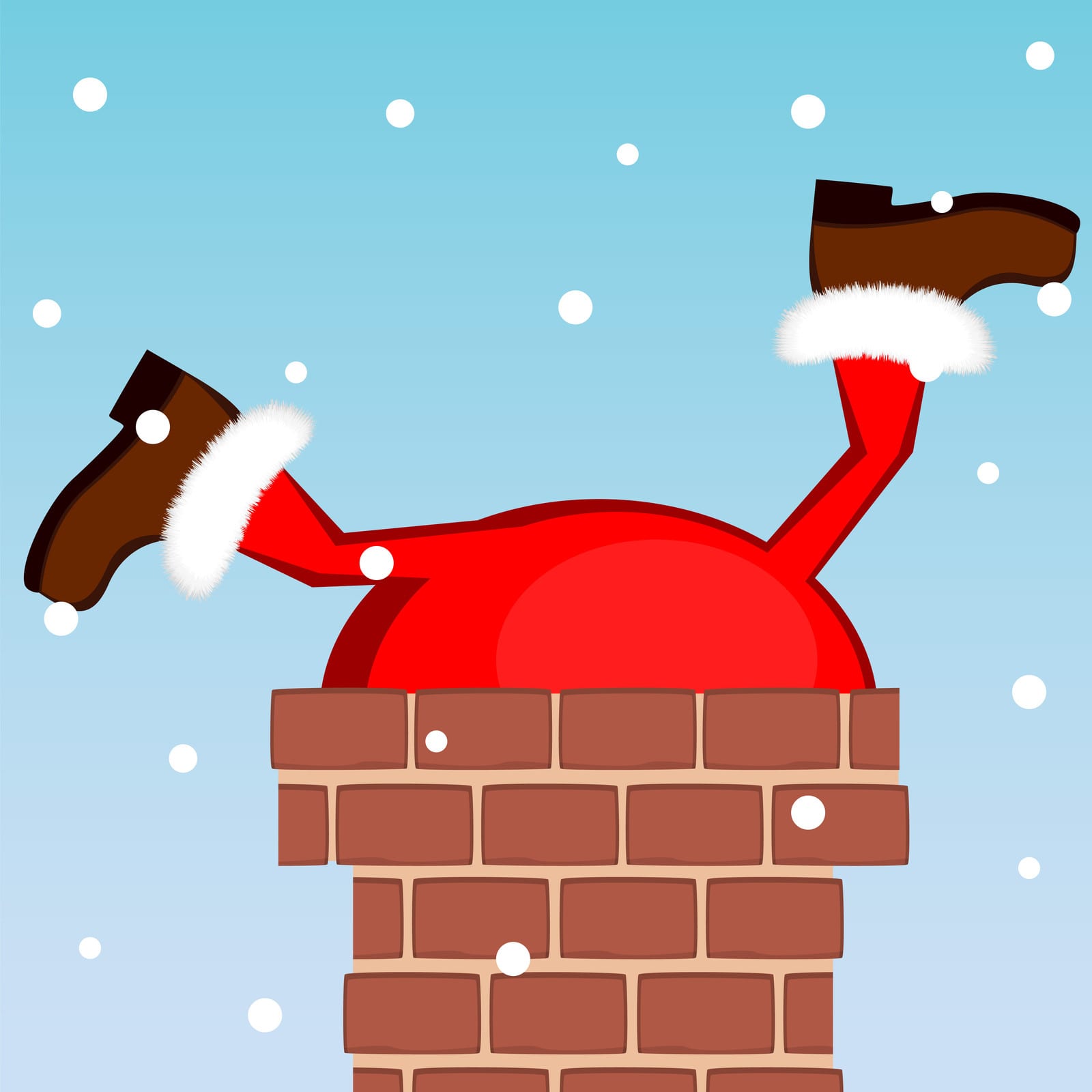 Forget whether or not Santa can fit down the chimney this Christmas. Fireplaces can have bigger problems if not maintained properly: like a dangerous house fire.
Forget whether or not Santa can fit down the chimney this Christmas. Fireplaces can have bigger problems if not maintained properly: like a dangerous house fire.
While a glowing hearth makes a home, a chimney — and the flue that lines it — carries dangerous gases from the fireplace, wood stove or furnace safely out of the house. Chimney flues lined with soot and cracks often serve as kindling for carbon monoxide intrusion and a house aflame. As such, homeowners should have chimneys inspected annually, the National Fire Protection Agency (NFPA) suggests.
“A chimney is a functioning unit and just like a car, you need to do regular maintenance on it to make sure it’s working properly. You definitely want to have annual inspections, and cleanings when necessary,” says Lindsey Couture, operations manager of Boston’s Best Chimney and a Chimney Safety Institute of America (CSIA) certified chimney sweep.
Though the term chimney sweep may conjure images of Dick van Dyke singing and dancing on rooftops in “Mary Poppins,” there’s more to the job than song and dance for these technicians.
Chimney Inspection
There are three levels of chimney inspections. Level one covers the basics: A technician examines the readily accessible portions of the chimney’s interior and exterior. No tools are needed to gain access. The technician checks the basic state of the homeowner’s chimney structure and flue. He or she will determine if obstructions exist and the nature and volume of combustible deposits. The process should take an hour to an hour and a half, according to the CSIA.
When homeowners are making changes to their heating systems, the NFPA recommends a level two inspection. This inspection often includes video scanning or other techniques to examine the internal surfaces and joints within the flue. “With a level two inspection, we’re looking for any sign of damage — any gap where smoke or fire can make its way into other areas,” Couture says.
When a chimney contains damage or requires special tools to access concealed areas, it’s time for a level three inspection. This procedure sometimes requires removal of components adjacent to the chimney, such as surrounding drywall.
Chimney Sweeping
By-products of wood fires — smoke, water vapor, gases, unburned wood particles, hydrocarbon, tar fog and assorted minerals — stick to the sides of the chimney and form a tar-like substance called creosote. The built up of creosote can catch fire and pose serious danger to homes and families. In order to prevent this, most firplace owners enlist a chimney sweep.
When cleaning a standard masonry fireplace, the technician removes or opens the damper plate for better access to the smoke chamber. Next, Couture uses special wire and poly brushes to remove deposits found on the liner and the smoke chamber. “We typically start at the bottom of the fireplace and work our way up,” she says. “We like to push the debris out of the home instead of back into the home.”
She’ll attach a series of fiberglass rods to the brush to extend it up the flue. While brushing, Couture and fellow sweeps set up special vacuums, such as a RoVac, for dust control. Sometimes they’ll wear respirators to avoid inhaling harmful chemicals.
Once the chimney is free of debris, technicians use a spotlight or camera to check the liner for cracks, gaps and missing joints, which would require future repair.

I inspect my chimney every few years, by using a very bright light from the top. The correct condition is no buildup of anything on the sides of the flues, and no irregularities at any joints or in between. The actual inspection takes less than five minutes, with another 20 minutes relegated to raising and lowering the ladder. So I find that the 90 minute inspection time is a bit suspect, unless the inspector is working from the bottom, or taking a lot of breaks. Or possibly just moving very slowly to justify the very big price.
I really appreciate your tip to have a level two home inspection when you want to do repairs on your heating system. My wife and I have been thinking of getting a new house, and we are concerned that we won’t be able to stay warm this winter with the heating system that we currently have. I will be sure to get a level two home inspection if we get a new heating system!